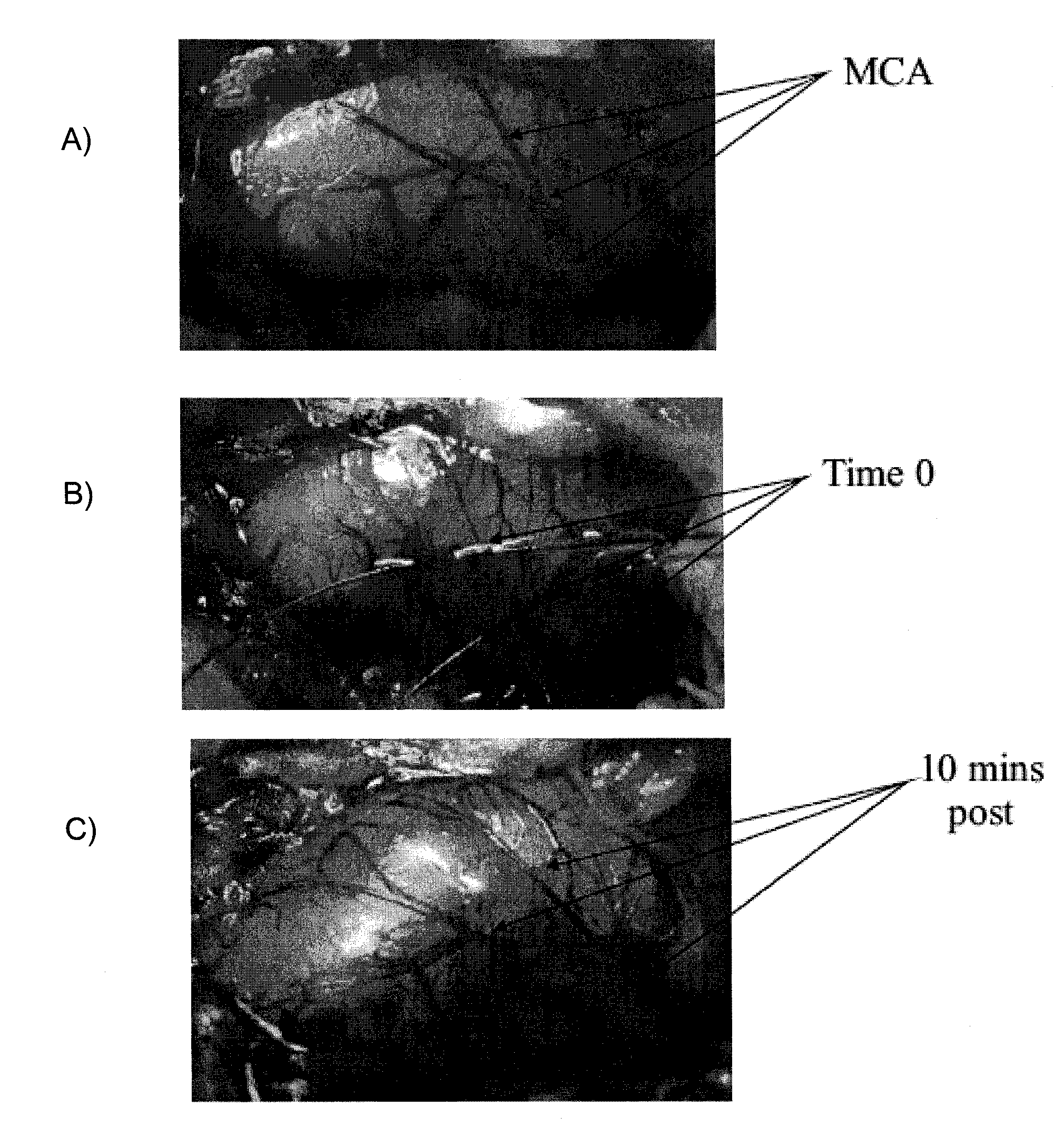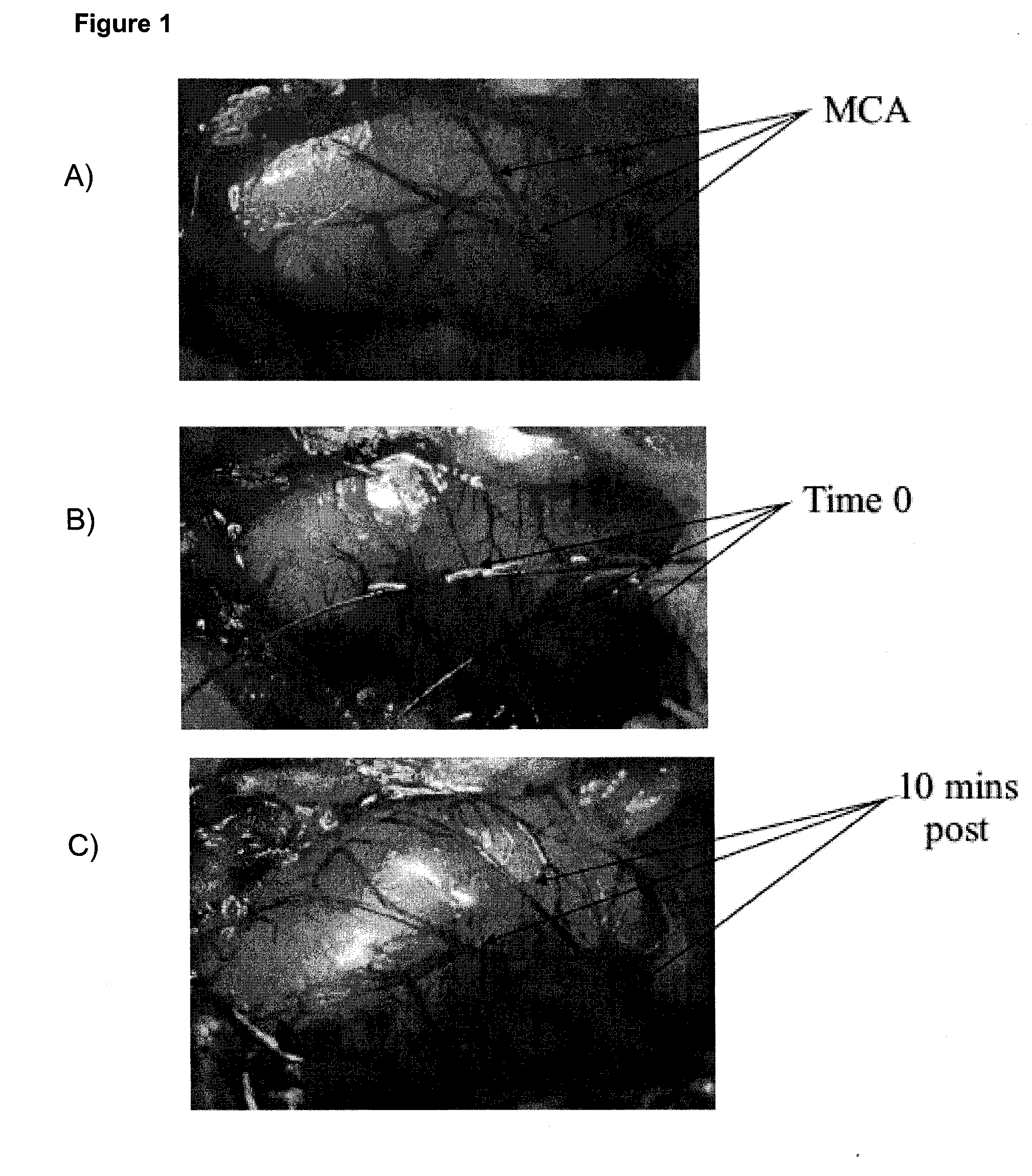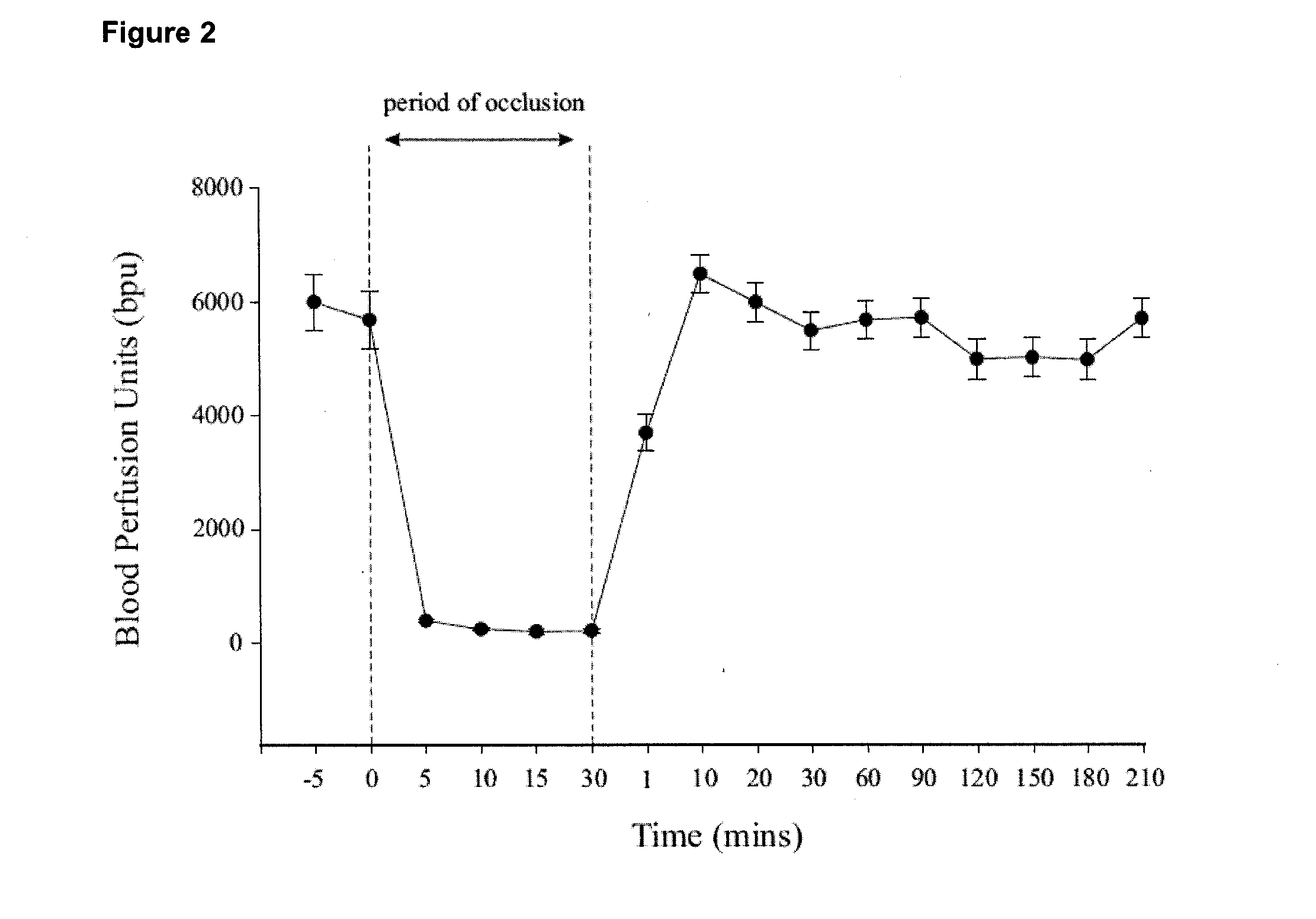Animal stroke model
a stroke model and animal technology, applied in the field of animal models of stroke, can solve the problems of tissue death, irreversible injury, brain area ceases to function and dies,
- Summary
- Abstract
- Description
- Claims
- Application Information
AI Technical Summary
Benefits of technology
Problems solved by technology
Method used
Image
Examples
example 1
Suture-Induced Middle Cerebral Artery Occlusion (MCAO)
[0081]Methods:
[0082]All experiments were carried out in accordance with the guidelines of the Canadian Council on Animal Care and were approved by the University of Prince Edward Island Animal Care Committee. All experiments were conducted on male Sprague-Dawley rats (n=4 to 6 animals per group); 200-300 g; Charles Rivers; Montreal, PQ, CAN). For all animals, food and tap water were available ad libitum.
[0083]Rats were anaesthetized with sodium thiobutabarbital (Inactin; RBI, Natick, Mass., USA; 100 mg / kg; ip). A polyethylene catheter (PE-10; Clay Adams, Parsippany, N.J., USA) was inserted into the right femoral vein to permit intravenous administration of drugs. An endotracheal tube was inserted to facilitate breathing. Body temperature was monitored by a digital rectal thermometer and maintained at 37±1° C.
[0084]Animals were placed in a David Kopf stereotaxic frame (Tujunga, Calif., USA) and the right MCA approached through a r...
example 2
Effect of Occlusion Time on Infarct Volume
[0090]The following experiment was designed to determine if a time-dependent relationship existed between MCAO and infarct volume.
[0091]Method:
[0092]MCAO was carried out as described in Example 1. The three sutures were left in place for 0.5, 2, 4, or 6 hours. Following the removal of the sutures, all animals were perfused transcardially with phosphate buffered saline (PBS; 0.1 M; 200 mls), the brains removed and sliced into 1 mm coronal sections using a rat brain matrix (Harvard Apparatus; Holliston, Mass., USA). Sections were incubated in a 2% solution of 2,3,5-triphenol tetrazolium chloride (TTC; Sigma-Aldrich; St. Louis; MO, USA) for 5 minutes.
[0093]Infarct volumes were calculated with the use of scanned digital images of each brain section. The infarct area for both sides of each brain section was calculated using a computer-assisted imaging system (Scion Corporation; Frederick, Md., USA). The infarct areas for each side for each indivi...
example 3
Effect of Reperfusion on Infarct Volumes
[0097]The following experiment was designed to investigate the effect of reperfusion on infarct volume following MCAO.
[0098]Method: MCAO was carried out as described in Example 1. The sutures were left in place, thus impeding blood flow through the MCA, for 0.5, 2 and 4 hrs. For the 0.5 hour group (n=9), blood flow was returned for 5.5 hours; for the 2 hour group (n=6), blood flow was returned for 4 hours; and for the 4 hour group (n=6), blood flow was returned for 2 hours. In an additional validation group (n=6), the sutures were put in place and immediately removed, and blood flow was allowed to return for 6 hours. In all cases, the return of blood flood was visually confirmed with the use of a dissecting microscope. In all groups, the experiment was terminated at the 6 hour time point.
[0099]At the end of six hours all animals were treated and infarct volumes determined as set out in Example 2.
[0100]Results:
[0101]There was a progressive incr...
PUM
| Property | Measurement | Unit |
|---|---|---|
| occlusion time | aaaaa | aaaaa |
| occlusion time | aaaaa | aaaaa |
| occlusion time | aaaaa | aaaaa |
Abstract
Description
Claims
Application Information
 Login to View More
Login to View More - R&D
- Intellectual Property
- Life Sciences
- Materials
- Tech Scout
- Unparalleled Data Quality
- Higher Quality Content
- 60% Fewer Hallucinations
Browse by: Latest US Patents, China's latest patents, Technical Efficacy Thesaurus, Application Domain, Technology Topic, Popular Technical Reports.
© 2025 PatSnap. All rights reserved.Legal|Privacy policy|Modern Slavery Act Transparency Statement|Sitemap|About US| Contact US: help@patsnap.com



